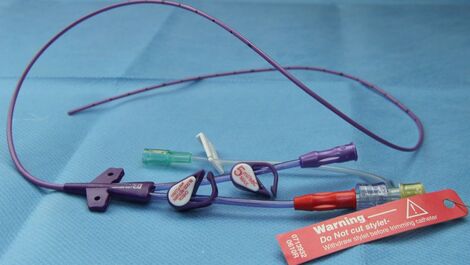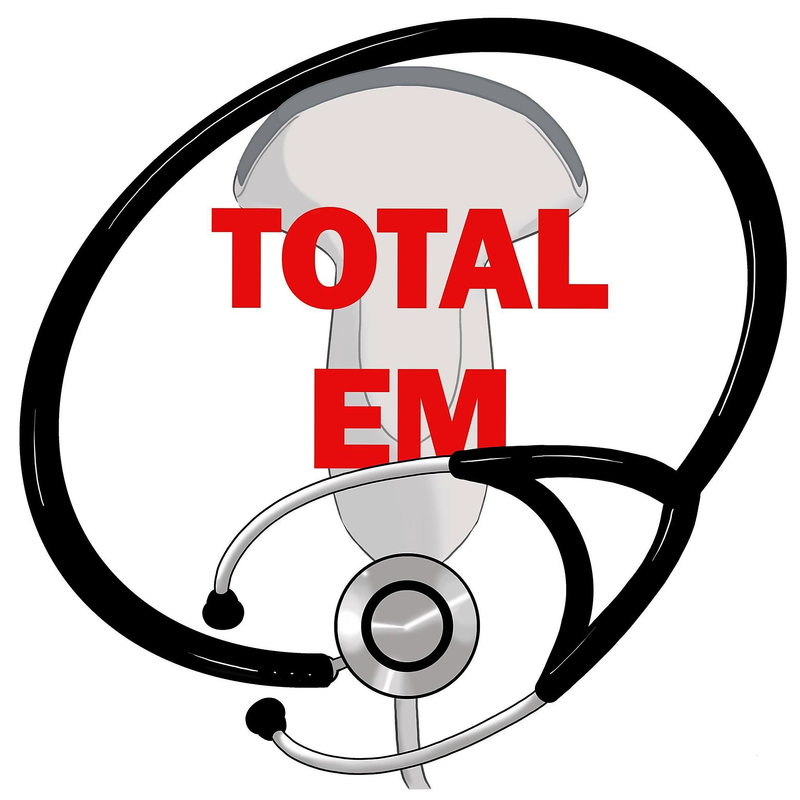|
Patrick Bafuma continues his series of EM ID interviews this time with Dr. Solberg from Bismark, North Dakota and has her own website. Peripherally inserted central catheter (PICC) lines are commonly used for both inpatient and outpatient care. These patients can come to us for a variety of potential complications. We will discuss some of the key ones in this post.
What do you do if the PICC line will not flush?
If the line is clotted, forceful flushing is the first step. It will not damage the PICC line. If a 10mL flush does not work, you can usually exert more PSI with a smaller syringe like a 3mL or 1mL. Usually this will resolve the issue and you will not need to use any dilute thrombolytic. What about other causes of failure to flush such as kinked tubing? Does this happen? If the patient’s arm is adducted and internally rotated on the PICC side, then yes, it could cause slow flushing or maybe the PICC will not aspirate. But if the patient straightens out, it should resolve. It should not kink inside the patient unless it has been in there too long. This is a bigger issue with tunneled central lines (sometimes they are called tunneled PICCs, even though they are just a tunneled central line, not really a PICC). Also make sure the BP cuff is not on the PICC arm. What about the “leaking" or "oozing" PICC line? If it is oozing blood hold pressure like any other time you have a small amount of bleeding. It is a low pressure vein so it should stop pretty quickly even if the pt is anticoagulated. You can use a biopatch but make sure to keep the area clean. PICC lines do not have a cuff so infection risk is higher than with tunneled lines. If there is serosanguinous or clear fluid this could be lymphatic fluid. There is no real way to fix this other than removing the PICC line. Frequent dressing changes until the PICC line is no longer needed is an option. If it is the same stuff you are injecting, then there may be a hole in the PICC line itself. What about malpositioned tips? Does this actually happen? Yes! Weird things can happen. Not everyone uses fluoroscopy to place PICC lines. Some are US based systems that detect the tip of the PICC line. The advantage for these systems is that it does not tie up your IR room. The main disadvantage is you do not know with absolute certainty where the tip is. Left sided picc line tips can actually flip from SVC to right brachiocephalic vein/subclavian vein. This can happen with ports, as well. The tip is frequently placed in the RA for all left sided lines (instead of the SVC) to prevent this from happening. PICC lines can end up in the IJ or other weird places. Dr. Solberg talks about placing a PICC line on a floor bed without fluoroscopy once and the patient said she had jaw pain. His guess was the wire went up the IJ! When he pulled the wire back the jaw pain resolved. Placement has to be done cautiously and definitely under continuous telemetry because if the wire goes to the RV it can cause V-tach. Dr. Solberg says he has even seen PICC line tips that somehow got tied in a knot. It is uncertain how this occurs but it should not happen spontaneously. What if we are suspecting a PICC line infection? Should we hold on antibiotics if the patient is hemodynamically stable until we can culture the catheter tip? If stable, get blood cultures from both the PICC line and peripheral site. You compare the colonies and if PICC line's are greater than it’s most likely the PICC line. Dr. Solberg generally does not remove PICC lines unless the patient is very sick. They generally do not culture the tip since that requires removal of the line and if the source has already been removed the infection has been controlled. Blood cultures have already been obtained and would most likely not alter management. What, if any, role is there for Cathflo in the ED? Are there only certain instances in which it is indicated? Dr. Solberg recommends a protocol for dilute thrombolytic use for clogged PICC lines. He is a firm believer in forceful flushing. Dilute thrombolytics can certainly help slow or partially thrombosed catheters. When is it time to call IR for assistance? For a malfunctioning PICC line it depends on the IR department. Dr. Solberg's department is usually not consulted during evenings or nights unless it is a pediatric case and access is required. Without knowing the situation, it can be a hard call. Try to obtain x-rays to see if the line is kinked or in the wrong position, perform forceful flushing, and potentially using dilute thrombolytics such as the Cathflo system. If the arm is swollen/hot, that is a different story as the patient probably has thrombophlebitis. The IDSA has good guidelines on the management of catheter infections. QUICK RECAP:
Let us know what you think by giving us feedback here in the comments section or contacting us on Twitter or Facebook. Remember to look us up on Libsyn and on iTunes. If you have any questions you can also comment below, email at [email protected], or send a message from the page. We hope to talk to everyone again soon. Until then, continue to provide total care everywhere.
1 Comment
5/30/2023 07:43:28 am
My blood clots very quickly and the last 3 PICC lines I have had became clotted,nurses in hospital used cathflo and lots of patience to unclog the line , however when both were clogged I found myself in the ER to unclog. ER Doctor was wonderful and innovative by using an empty syringe like suction and pulling out on line contents with pressure then let it go … POP ! After the pop on both lines separately they are still flowing days after.
Reply
Leave a Reply. |
Libsyn and iTunesWe are now on Libsyn and iTunes for your listening pleasure! Archives
August 2022
Categories |
||||||


 RSS Feed
RSS Feed